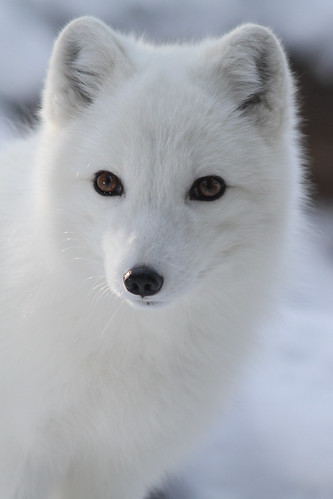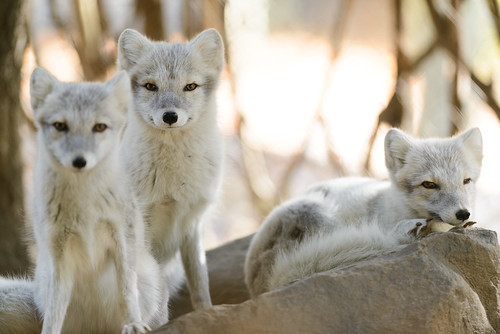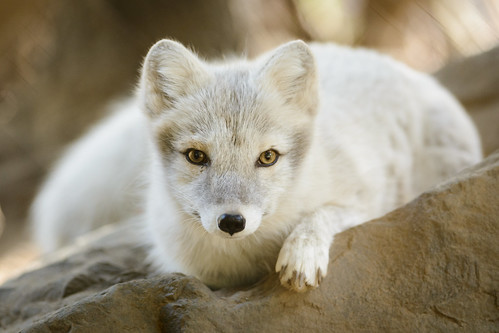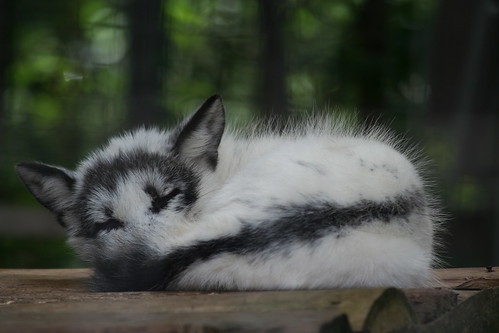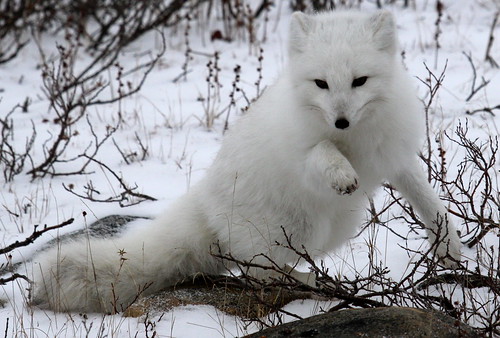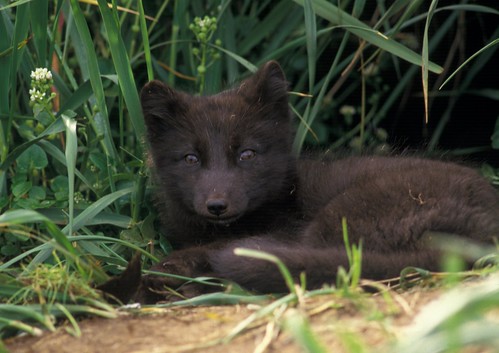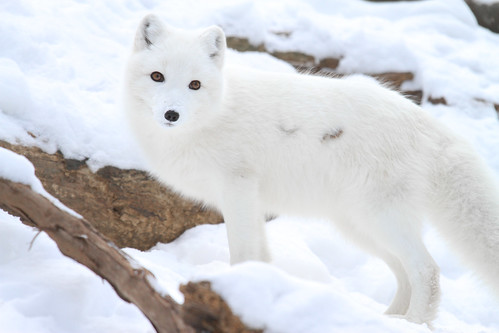Time for Wildlife Wednesday! This week we're talking about Arctic foxes. Ready to learn some fun animal facts?
 by Eric Kilby
by Eric Kilby
Arctic foxes live in the tundra of North America, Greenland, Iceland, Asia and Scandinavia.
 by Eric Kilby
by Eric Kilby Arctic foxes live in the tundra of North America, Greenland, Iceland, Asia and Scandinavia.
Arctic foxes are sometimes called Snow Foxes or White Foxes.
They weigh about 6-8 pounds. Males are heavier than females.
Arctic foxes are compact. This helps them conserve heat. Less surface area means less exposure to cold air. They have short legs, muzzles and ears.
The tail makes up 30-35 percent of the body length of an arctic fox. They use their tails to help protect their face from wind.
Arctic fox fur is considered the warmest fur of any mammal. It helps them withstand temperature of -58° Fahrenheit (-50° Celsius).
The fur of the Arctic fox is 70% a thick fine undercoat.
Arctic foxes have thick fur on their paws, to help protect them from ice and snow.
The fur of the arctic fox changes color with the seasons. It is white in the winter to help them blend in with the snow and they are darker in the summer.
The Arctic fox comes in two types of color “phases”, also known as a morphs or forms. There is the white or polar phase, and a blue phase.
The white morph is the phase most people are familiar with, pure white fur in winter that goes light brown in summer. They usually live in the most northern areas of the Arctic foxes' range.
The blue phase is dark brown, or gray in the summer. In winter, their coat becomes blueish gray, never turning fully white.
The blue morph is much rarer that the white morph.
The favorite food of the arctic fox is the lemming, but they will make the most of any opportunity for a meal, even scavenging from another predator's meal, to hunting a vulnerable baby seal.
Arctic foxes sometimes hide food for later use in their dens or under rocks. This is called a cache.
The Arctic fox has excellent hearing. They can hear prey under the snow.
Once a fox hears its future meal under the snow, it leap into the air and pounces, breaking through the snow.
Arctic foxes live in underground dens. Some dens have been used by multiple generations.
Arctic foxes travel a lot. The only other land mammal that travels more widely than the arctic fox is humans.
Arctic foxes usually have 5-10 pups, but can have quite a few more if food is abundant.
Both parents care for the young.
For more animal facts, check out some of the other Wildlife Wednesday posts



